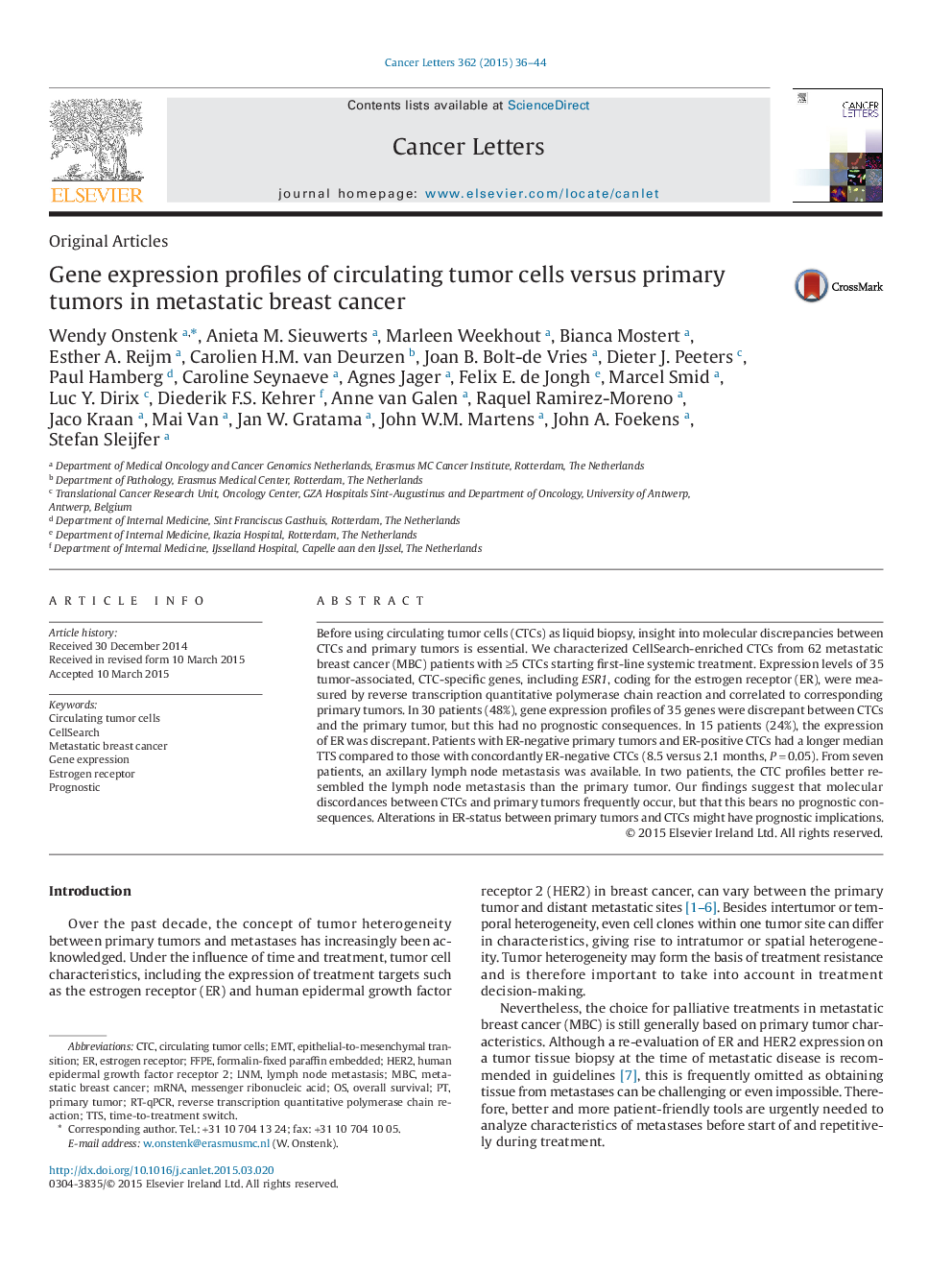| Article ID | Journal | Published Year | Pages | File Type |
|---|---|---|---|---|
| 2112477 | Cancer Letters | 2015 | 9 Pages |
•In 62 metastatic breast cancer (MBC) patients with ≥5 CTCs starting first-line treatment.•Expression levels of 35 CTC-specific genes were compared with primary tumors.•In 48% we observed large discordance between primary tumor and CTCs.•In 24% expression of the estrogen receptor was discordant.•Discordance in ER had prognostic significance, whereas overall discordance had not.
Before using circulating tumor cells (CTCs) as liquid biopsy, insight into molecular discrepancies between CTCs and primary tumors is essential. We characterized CellSearch-enriched CTCs from 62 metastatic breast cancer (MBC) patients with ≥5 CTCs starting first-line systemic treatment. Expression levels of 35 tumor-associated, CTC-specific genes, including ESR1, coding for the estrogen receptor (ER), were measured by reverse transcription quantitative polymerase chain reaction and correlated to corresponding primary tumors. In 30 patients (48%), gene expression profiles of 35 genes were discrepant between CTCs and the primary tumor, but this had no prognostic consequences. In 15 patients (24%), the expression of ER was discrepant. Patients with ER-negative primary tumors and ER-positive CTCs had a longer median TTS compared to those with concordantly ER-negative CTCs (8.5 versus 2.1 months, P = 0.05). From seven patients, an axillary lymph node metastasis was available. In two patients, the CTC profiles better resembled the lymph node metastasis than the primary tumor. Our findings suggest that molecular discordances between CTCs and primary tumors frequently occur, but that this bears no prognostic consequences. Alterations in ER-status between primary tumors and CTCs might have prognostic implications.
